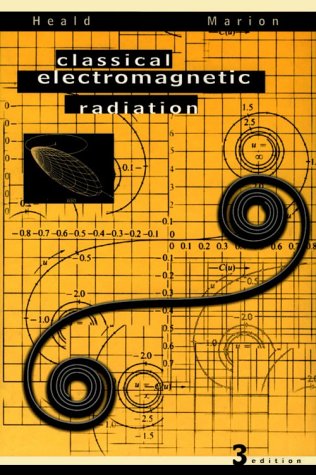Classical electromagnetic radiation pdf download
Par finnell brandon le dimanche, avril 2 2017, 02:46 - Lien permanent
Classical electromagnetic radiation by Heald M.A., Marion J.B.


Classical electromagnetic radiation Heald M.A., Marion J.B. ebook
ISBN: 0030972779, 9780030972775
Publisher: Saunders
Format: djvu
Page: 586
'… a most welcome addition on the subject of electromagnetic radiation and will certainly be of interest to any graduate or advanced undergraduate for many years to come. The classical theory of electromagnetic radiation too is somewhat limited in its ability to provide correct descriptions, since quantum effects are observable in more everyday circumstances than quantum effects of matter. Assume sources, restricted to a finite domain, which emit radiation. In a subtle distinction, what we call the magnetic field can (classically) only be detected by its effect on a moving test charge, so one must use a second moving charge to characterize the "magnetic" force from a first moving charge. The book covers: oscillations, waves, electromagnetic radiation, transmission of electromagnetic radiation, reflection, refraction, scattering, interaction of electromagnetic fields with matter, diffraction/interference and coherence. Electromagnetic Waves in Classical Physics is being discussed at Physics Forums. I always figured that the Earth's magnetic field was part of this "production of eletromagnetic waves" that you're talking about. How Electromagnetic Induction vs. This observation is the application of a branch of classical electromagnetic theory known as radiation reaction. This journey is based on classical physics. Electromagnetic Radiation, Classical Physics, 17. Similarly, frequency is a concept that only really applies to classical electromagnetic waves, so if you want to define frequency, you need to look at a beam of photons and take expectation values. And we know radiation does experience gravitation , this would directly imply that it occupies 'space' or 'volume' . The inclusion of the speed of light in Einstein's equation was based on the principles of classical mechanics and electromagnetic radiation, the latter of which is pure energy. Since electromagnetic radiation is composed of changing electric and magnetic fields, does that mean that EMR (light) causes an electric and magnetic force on charged particles/objects? Don't think of a photon as a tiny localized bundle of electromagnetic fields, such that if you "add up" a lot of photons (and their fields) you get the classical electromagnetic radiation field. Posted by Jeff Condon on January 26, 2012. Circular Reasoning on Rectilinear Propagation of Electromagnetic Radiation. I've been spending time working on improved sea ice code. According to classical electrodynamics, empty space containing electromagnetic radiation possesses energy. In fact, this radiant energy is responsible for the ability of a hollow cavity to absorb heat.